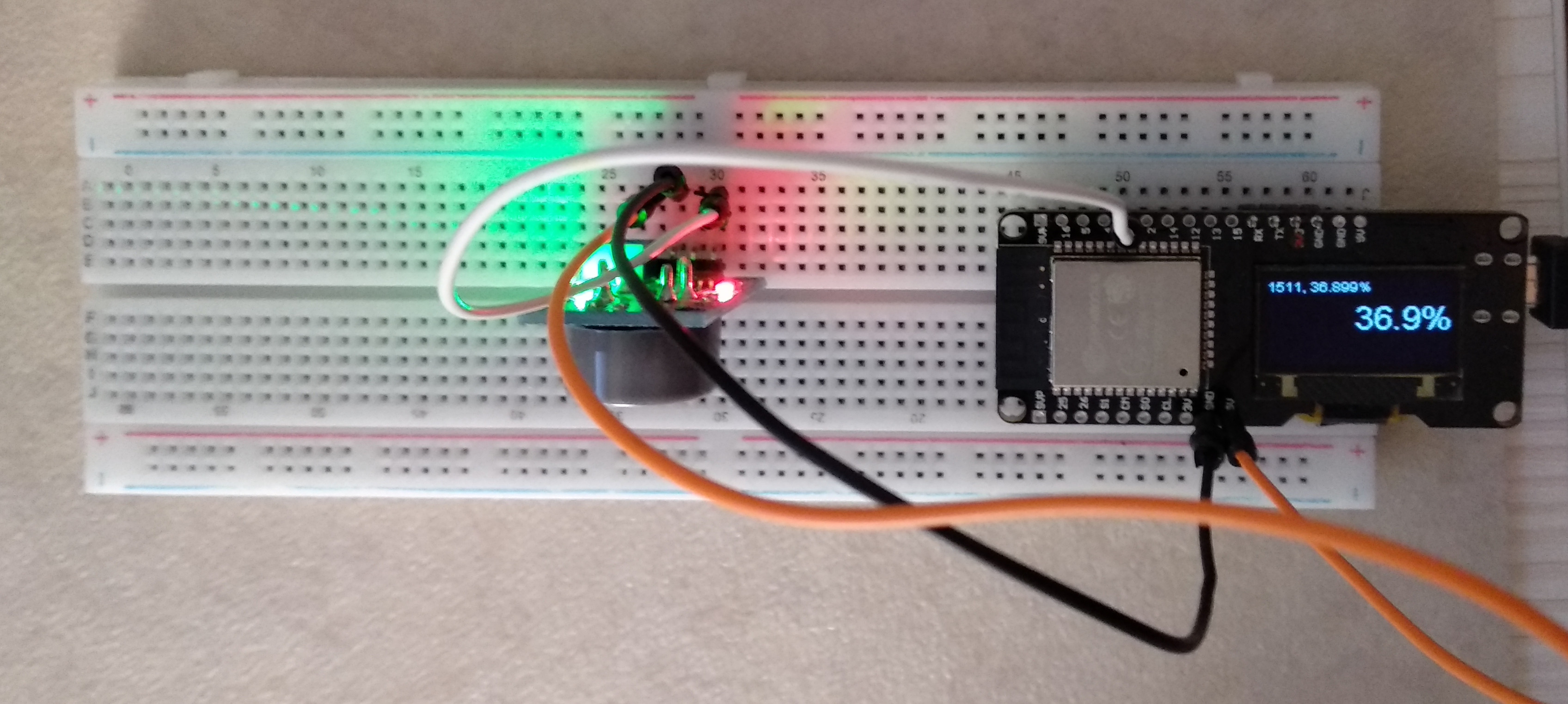ESP_MQ7_OLed_display
Test project for the ESP32 Oled display and MQ7 CO sensor
The code reads the sensor value periodically, converts it to a percent (assuming the input is 0V..5V) and displays it. Normally these things should get through a calibration phase, but it's easier to monitor the device and checkoud the limits by hand. The displayed value is actually a running average, to avoid temporary spikes.
In my case, the limits are:
- 0..40% unusually clean air (the device display gets faded)
- 40%..50% normal, in-house air (the device display gets a string lighness)
- 50%..100% dirty/open the windows now (the device display gets inverted)
If the values change too fast, then the delay between reads gets smaller, to adapt faster to the changing conditions.
Schematic
It's this board https://www.aliexpress.com/item/1PC-Lolin-ESP32-OLED-Module-For-Arduino-ESP32-OLED-WiFi-Bluetooth-Dual-ESP-32-ESP-32S/32820916897.html
For help on how to configure it, use https://github.com/FablabTorino/AUG-Torino/wiki/Wemos-Lolin-board-(ESP32-with-128x64-SSD1306-I2C-OLED-display) , but Arduino IDE seems to simply need to add the corresponding board, and everything seems to work as expected
NOTE
Please note that the sensors readings are not exactly accurate. I don't really know how they correlate with other gases (and they do according to the MQ7 specs). If I'd follow https://www.detectcarbonmonoxide.com/co-health-risks/ then I should have serious health problems at 50% displayed by this device, because this would translate to about 1000ppm CO concentration (the MQ7 sensor reports Co concentration between 20ppm-2000ppm, on a somewhat linear slope, but dependant on temperature and humidity, and lots of other gases)

